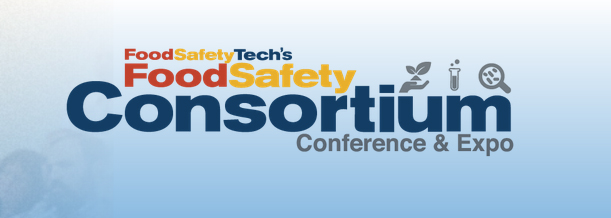The grocery sector has always been the bedrock of traditional brick-and-mortar retail, and it is no surprise why. How many people have wanted to check first-hand the ripeness of a tomato or how fresh the lettuce looks? The up-front examination is everything.
However, the COVID-19 pandemic has accelerated a change in the psychology of grocery shoppers. Health guidelines that have encouraged lockdown and working from home have focused the mind of many people on health consciousness with a need to keep financial stability in the throes of unemployment or furlough. Purse strings are tightened, more home cooking and fewer luxuries mean there is no longer a need to buy specialty products when basic provisions can be met at home.
Home Is the HQ
Staying at home has meant larger purchase sizes, which has led to fewer trips to the supermarket, bigger basket/cart size when you get there and an increase in private label purchases. People have also become more conscious of what they are putting in their bodies.
Social distancing has made many consumers resort to online grocery shopping. As long as there is availability, at a right price and an efficient delivery time, consumers are prepared to forego their normal habits for the sake of convenience and time saving. There is also no denying the surge in online purchasing for groceries during the pandemic. Interestingly, the market has seen an exponential increase in conversion in the over-50 age group—a group that may have ordinarily resisted this activity.
Health Concerns Sway More People to Shop Online, Regardless of the Product
According to Accenture, there is expected to be a 160% increase in e-commerce purchases from new and low frequency users. The vast majority of consumers who have increased their use of digital and omnichannel services, such as home delivery, curb-side pickup or shopping via social media platforms, expect to sustain these activities into the future.
The Wunderman Thompson Future Shopper Report 2020 highlights that online shopping—and shopping on Amazon in particular—is a popular choice across most industry sectors (including health and pharmaceutical, entertainment and toys); 30% of those purchasing luxury products and 40% of those buying groceries would never buy these products online. But with lockdown measures still firmly in place for most countries, consumer resolve is likely to be tested, and loyalty to physical stores continues to wane.
Consumers are taking stock of their own concerns in terms of home cooking and shopping for local produce and the process for reducing food waste. They are also taking more time to decide what they will need for food or grocery items, and it is likely that many choices will be made before consumers enter the supermarket, as much of the research is done online for product information.
Research undertaken by Bazaarvoice revealed a 21% increase in online orders in March 2020 versus March 2019, with 41% of respondents stating that they were currently shopping online for things they would ordinarily shop for in-store. By April, they were spending more time and making more purchases online, which pushed groceries out of the number one essential category. This may have been due to people getting used to spending longer periods of time at home, moving past the essential necessity phase, and as a result, product shortages have eased, and different product categories are being prioritized.
Changing Expectations for Greater Online Grocery Shopping Experiences
Every generations’ lives and shopping behaviors are now intertwined with digital commerce. They are driven even more strongly by factors such as range, ease, speed and convenience. Online grocery shopping—both delivery and pickup—is cheaper, reducing the number of trips that keeps shoppers out of stores, where personnel are also at serious risk of infection.
And for retailers, inserting a row of fresh vegetables on websites such as Walmart Grocery or Amazon Fresh to the same grid style as they use to sell laptops or smartphone cases can look clinical and confusing to consumers. Food shoppers want to touch the tomatoes. Slicing the grocery store up into individual, pixelated goods doesn’t feel like grocery shopping anymore.
Relevant Accurate Product Information Is the Key
In an article in The Atlantic, Bryan Leach, CEO of shopping promotions company IBotta, predicts: “Shoppers won’t lose the ability to manipulate the avocados, pick something up on short notice, or just browse aimlessly for meal inspiration”. Retailers will have to up their game to provide improved customer experience in product presentation and selection.
Some online grocery retailers are already providing online menus and the ingredients to cook for specific meals. Internet-grocery fetchers might come to be seen more as the small shopkeepers of the turn of the century, or the community-supported agriculture services that deliver fresh, local goods or provide specialized groceries or services.
By serving optimal E-commerce sites that provide specialized product information either through chatbots, specialized product range and knowledgeable staff will further enhance the experience and value.
Some companies such as Fortuitas and Javelin Group are supporting retail brands to provide more accurate product information to their E-commerce websites with the help of product information management systems. The provision of consistent data in an omnichannel environment means that up-to-date product knowledge and availability can be accessible on an on-going basis leading to better trust and online sales.
While access to marketplaces such as Google, Amazon Fresh and Ocado continues to grow for grocery products during the pandemic, some marketplaces have defined the following tactics to keep customers engaged through the use of product information.
1. Prevent Panic Buying With Product Badging
Brands can bring more responsibility to the shopping process on marketplaces like Amazon, Google and online retailer web catalogues by using product information to discourage panic buying through the addition of social cues. These can have a big impact on how customers view brands and products. Through this product badging, where, for example, you limit the purchase of essential products per user, consumers can shop more responsibly and feel more in touch with the brand as a ‘caring’ provider.
2. Promote Stay at Home
Offer a unique opportunity to improve customer experiences by promoting product categories that are most popular at a given time. Stay at home and work from home lifestyles are presenting new and unique requirements for users. There is a need to create relevant product categories designed for work from home and promote them on your website.
3. Back-in-Stock Notifications/Recommendations for Similar Products
Creating a landing page with relevant recommendations for similar products that other users have purchased can serve as a way to improve customer experience on your website.
There is no doubt that COVID-19 has changed the grocery purchasing mentality for purchasers, and it is likely to develop further during the pandemic. It is whether many of these habits are likely to remain post-COVID? What is certain is that increasing accuracy of product information will be key to a continued growth for sales both online and in-store.



















